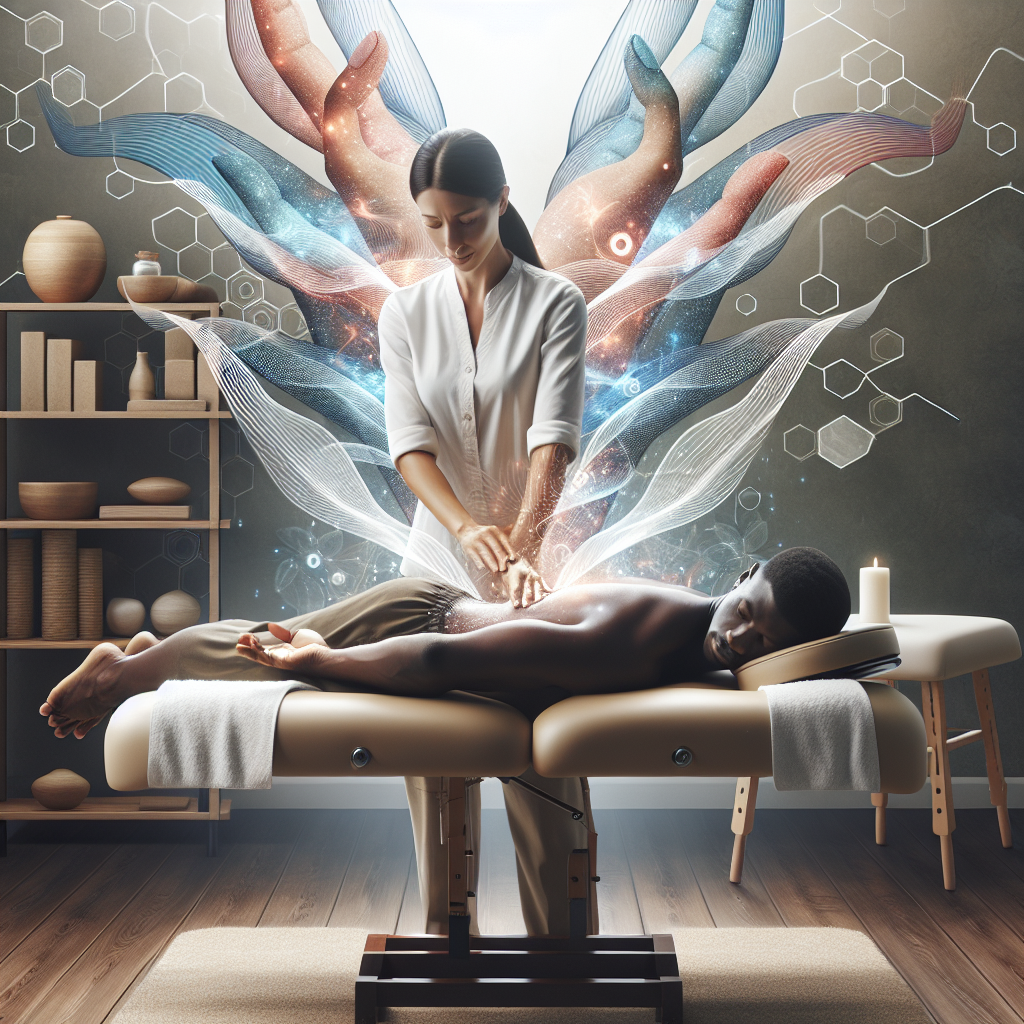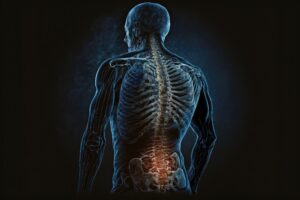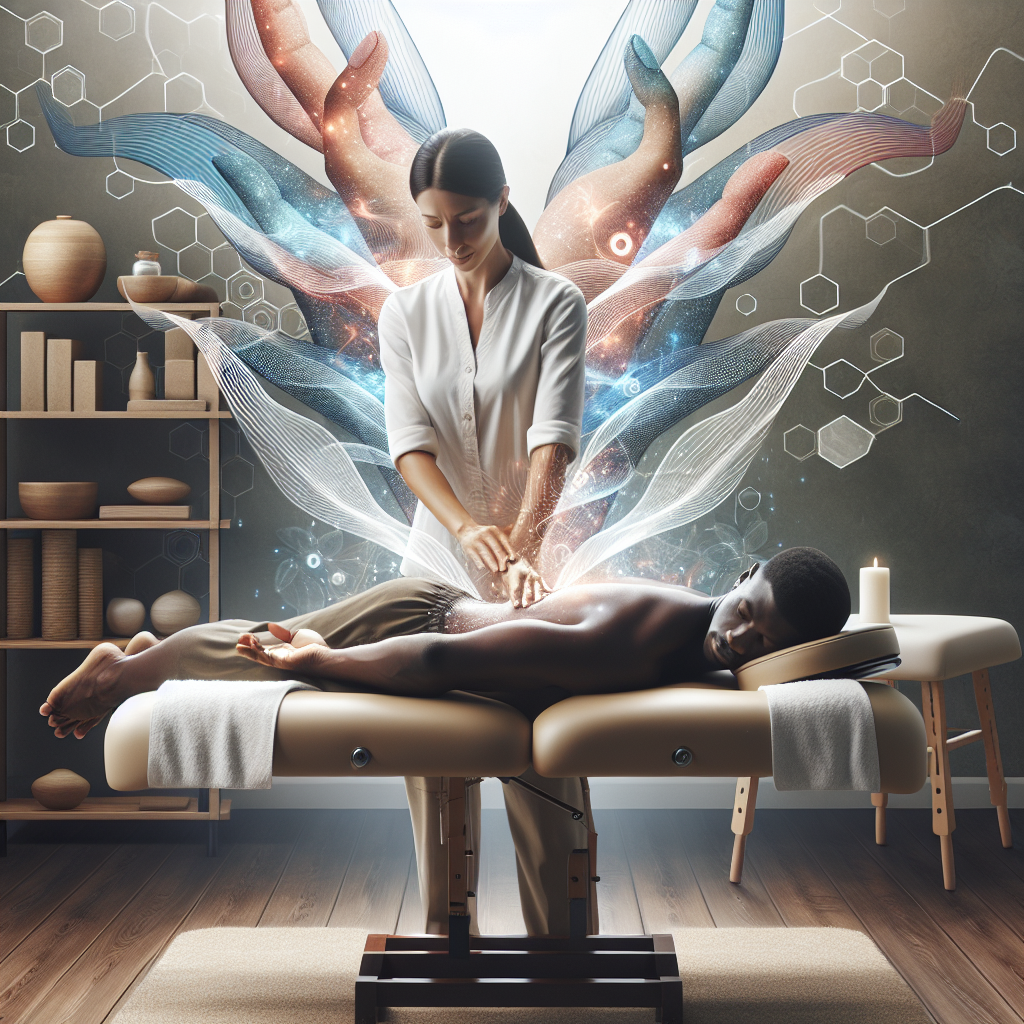
Can Massage Therapy Effectively Treat Lower Back Pain?
If you suffer from lower back pain, you’ve probably tried various treatments and remedies to find relief. But have you ever considered massage therapy as an effective solution? It’s a question worth exploring, as massage therapy has gained popularity in recent years as a potential treatment for this common ailment. Many people claim that massage can provide immediate relief and long-term benefits for managing lower back pain. So, in this article, we will delve into the effectiveness of massage therapy in treating lower back pain and whether it could be a viable option for you.
I. Understanding Lower Back Pain
A. Anatomy of the Lower Back
Lower back pain, also known as lumbago, is a common condition that affects millions of people worldwide. To better understand how massage therapy can effectively treat lower back pain, it’s important to have a basic knowledge of the anatomy of the lower back. The lower back, or lumbar region, consists of five vertebrae (L1-L5) and the sacrum. These vertebrae are supported by muscles, ligaments, and tendons, which work together to provide stability, support, and mobility to the spine.
B. Common Causes of Lower Back Pain
Lower back pain can have various causes, ranging from muscle strains and sprains to more serious conditions such as herniated discs or spinal stenosis. Some common causes of lower back pain include poor posture, sedentary lifestyle, repetitive movements, lifting heavy objects improperly, and age-related degenerative changes in the spine. Identifying the underlying cause of your lower back pain is crucial in determining the most effective treatment approach, including massage therapy.
C. Symptoms of Lower Back Pain
Lower back pain can manifest in different ways, and the symptoms experienced may vary from person to person. Common symptoms of lower back pain include aching, stiffness, sharp or shooting pain, limited range of motion, and discomfort with movement or prolonged sitting or standing. The pain may be localized to the lower back or radiate down the legs, commonly referred to as sciatica. If you’re experiencing any of these symptoms, seeking a professional evaluation is important to receive an accurate diagnosis and appropriate treatment.
II. Benefits of Massage Therapy for Lower Back Pain
A. Pain Relief
One of the primary benefits of massage therapy for lower back pain is pain relief. Massage helps to relax tense muscles, improve blood flow, and release endorphins – the body’s natural painkillers. The hands-on manipulation of soft tissues, including muscles and fascia, can help alleviate muscle spasms, reduce nerve compression, and decrease pain sensations. Whether your lower back pain is acute or chronic, regular massage therapy sessions can provide significant pain relief and improve your overall quality of life.
B. Improved Blood Circulation
Massage therapy can also help improve blood circulation in the lower back region. By increasing blood flow, oxygen and nutrients are delivered to the muscles, promoting healing and reducing inflammation. Improved circulation also helps flush out toxins and waste products, which can contribute to muscle soreness and stiffness. With enhanced blood circulation, the affected area receives the necessary nutrients and oxygen to promote healing and alleviate lower back pain.
C. Reduced Inflammation
Inflammation plays a significant role in lower back pain, as it can worsen pain and hamper the healing process. Massage therapy has been shown to reduce inflammation by stimulating the release of anti-inflammatory substances in the body. By applying gentle pressure and specific techniques, massage therapists can help reduce swelling, decrease pain-causing chemicals, and promote a quicker recovery. Incorporating massage therapy into your lower back pain management plan can effectively target inflammation and provide long-term relief.

III. Types of Massage Techniques for Lower Back Pain
A. Swedish Massage
Swedish massage is one of the most common and well-known massage techniques. It involves using long, gliding strokes, kneading, and circular movements to promote relaxation and improve circulation. Swedish massage is particularly beneficial for reducing muscle tension and increasing flexibility in the lower back. The gentle and rhythmic motions can help relieve tightness and release built-up stress, making it an effective treatment option for lower back pain.
B. Deep Tissue Massage
Deep tissue massage is a more intense and focused massage technique that targets the deeper layers of muscles and connective tissues. This technique involves applying firm pressure and slow strokes to release chronic muscle tension and knots, which can contribute to lower back pain. Deep tissue massage can break up scar tissue and adhesions, improve mobility, and promote healing for individuals suffering from chronic lower back pain.
C. Trigger Point Therapy
Trigger point therapy focuses on specific points of muscle tension, known as trigger points, which can refer pain to other areas of the body, including the lower back. By applying direct pressure to these trigger points, massage therapists can help alleviate pain and release muscle tension. Trigger point therapy is effective in addressing localized pain and targeting the root cause of lower back pain.
IV. Research on Massage Therapy for Lower Back Pain
A. Study 1: Efficacy of Massage Therapy in Treating Lower Back Pain
One study published in the Journal of Pain Research examined the efficacy of massage therapy in treating chronic lower back pain. The study found that massage therapy significantly reduced pain intensity and disability in individuals with chronic lower back pain. Participants who received massage therapy reported improved quality of life and increased functional ability compared to those in the control group. The findings suggest that massage therapy can be an effective treatment option for chronic lower back pain.
B. Study 2: Comparison of Massage Therapy and Traditional Treatment for Lower Back Pain
Another study conducted by researchers at the University of Medicine and Dentistry of New Jersey compared the effectiveness of massage therapy and traditional treatment for lower back pain. The results showed that massage therapy provided more significant improvements in pain intensity, physical function, and overall quality of life compared to traditional treatment alone. The study concluded that massage therapy can be a valuable adjunctive treatment for individuals with chronic lower back pain.
C. Study 3: Long-Term Effects of Massage Therapy on Lower Back Pain
A long-term study published in the Annals of Internal Medicine investigated the effects of massage therapy on individuals with chronic low back pain. The study followed participants for one year and found that those who received regular massage therapy experienced greater reductions in pain and improved physical function compared to those who did not receive massage therapy. The study concluded that massage therapy can provide long-term benefits for individuals with chronic lower back pain.

V. Finding the Right Massage Therapist
A. Qualifications and Credentials
When seeking massage therapy for lower back pain, it’s essential to find a qualified and licensed massage therapist. Look for therapists who have graduated from accredited massage therapy schools and hold relevant certifications. Additionally, check if they are registered with a professional organization, such as the American Massage Therapy Association (AMTA) or the Associated Bodywork & Massage Professionals (ABMP). These credentials ensure that the therapist has undergone the necessary training and meets professional standards.
B. Experience and Specialization in Treating Lower Back Pain
Consider the experience and specialization of the massage therapist in treating lower back pain. Ask about their background and if they have specific techniques or approaches they use for addressing lower back pain. A therapist who has experience working with individuals with similar conditions or injuries can provide targeted treatment and better understand your unique needs.
C. Client Reviews and Recommendations
Reading client reviews and seeking recommendations can be an excellent way to gauge the quality of a massage therapist. Look for reviews or testimonials on their website, social media pages, or online review platforms. Additionally, don’t hesitate to ask friends, family, or healthcare professionals for recommendations. Personal experiences and referrals can provide valuable insights into the therapist’s skills, professionalism, and effectiveness in treating lower back pain.
VI. What to Expect During a Massage Therapy Session
A. Initial Assessment and Consultation
During your first massage therapy session, the therapist will conduct an initial assessment and consultation. They will discuss your medical history, current symptoms, and specific goals for the massage treatment. This assessment helps the therapist gain a comprehensive understanding of your condition and design a personalized treatment plan to address your needs effectively.
B. Duration and Frequency of Sessions
The duration and frequency of massage therapy sessions may vary depending on your individual needs and the recommendation of your therapist. Generally, a session can last anywhere from 30 minutes to 90 minutes. Initially, you may require more frequent sessions to address acute pain or injuries. As your condition improves, the frequency may decrease to regular maintenance sessions.
C. Techniques and Pressure
Your massage therapist will utilize various techniques and adjust the pressure to cater to your comfort level. They may use a combination of Swedish massage, deep tissue massage, trigger point therapy, or other techniques specifically suited to alleviate lower back pain. Communicate your preferences and any discomfort during the session to ensure the therapist can make the necessary adjustments for a more effective and comfortable treatment.

VII. Precautions and Contraindications
A. Medical Conditions that May Limit or Prevent Massage Therapy
While massage therapy can be beneficial for many individuals with lower back pain, there are certain medical conditions that may limit or prevent the use of massage therapy. Conditions such as fractures, infections, advanced osteoporosis, clotting disorders, and certain skin conditions may require caution or contraindicate massage therapy. It is essential to discuss your medical history and any existing conditions with your healthcare provider and massage therapist to ensure it is safe to undergo massage therapy.
B. Importance of Communicating with Your Healthcare Provider
Before incorporating massage therapy into your treatment plan, it is essential to communicate with your healthcare provider. They can provide guidance on whether massage therapy is suitable for your specific condition and advise on any precautions or modifications that may be necessary. Your healthcare provider can work in conjunction with your massage therapist to develop a comprehensive treatment plan that addresses your lower back pain effectively.
VIII. Incorporating Massage Therapy into a Comprehensive Treatment Plan
A. Combined Approach with Physical Therapy and Exercise
Massage therapy can be a valuable addition to a comprehensive treatment plan for lower back pain. Combining massage therapy with physical therapy and exercise can optimize results and enhance overall recovery. Physical therapy can help strengthen the muscles surrounding the lower back, improve flexibility, and correct postural imbalances. Massage therapy complements these interventions by reducing pain and muscle tension, allowing for better engagement in exercise and physical therapy routines.
B. Integration with Medications and Pain Management Techniques
Massage therapy can also be integrated with medications and other pain management techniques. It is essential to discuss your medications with your healthcare provider and massage therapist to ensure there are no contraindications or adverse interactions. Combining massage therapy with pain management techniques such as heat or cold therapy, acupuncture, or chiropractic care can provide a multidimensional approach to managing lower back pain.

IX. Self-Care Practices for Managing Lower Back Pain
A. Stretching and Strengthening Exercises
In addition to massage therapy and other treatments, incorporating stretching and strengthening exercises into your daily routine can help manage lower back pain. Gentle stretches targeting the lower back, hips, and hamstrings can alleviate muscle tightness and improve flexibility. Strengthening exercises, such as core exercises and back extensions, can help stabilize the spine and prevent future episodes of lower back pain.
B. Proper Posture and Ergonomics
Maintaining proper posture and ergonomics throughout daily activities is crucial in preventing and managing lower back pain. Avoid slouching, practice good posture, and ensure your workspace is ergonomically designed to support a healthy spine. Simple adjustments, such as using an ergonomic chair or standing desk, can greatly reduce the strain on your lower back and alleviate pain.
C. Stress Reduction Techniques
Stress can increase muscle tension and exacerbate lower back pain. Engaging in stress reduction techniques, such as deep breathing exercises, meditation, yoga, or engaging in hobbies, can help relax the mind and body, reducing muscle tension and promoting overall well-being. By managing stress effectively, you can complement the effects of massage therapy and other treatments for better long-term pain management.
X. Conclusion
Massage therapy can be an effective treatment option for individuals with lower back pain. Through its pain-relieving, blood circulation-enhancing, and inflammation-reducing benefits, massage therapy provides a holistic approach to managing lower back pain. By choosing a qualified massage therapist, incorporating massage therapy into a comprehensive treatment plan, and practicing self-care techniques, you can effectively alleviate lower back pain, improve functionality, and enhance your overall quality of life. Remember to consult with your healthcare provider to ensure massage therapy is safe and suitable for your specific condition. Embrace the healing power of massage therapy and take control of your lower back pain today.









